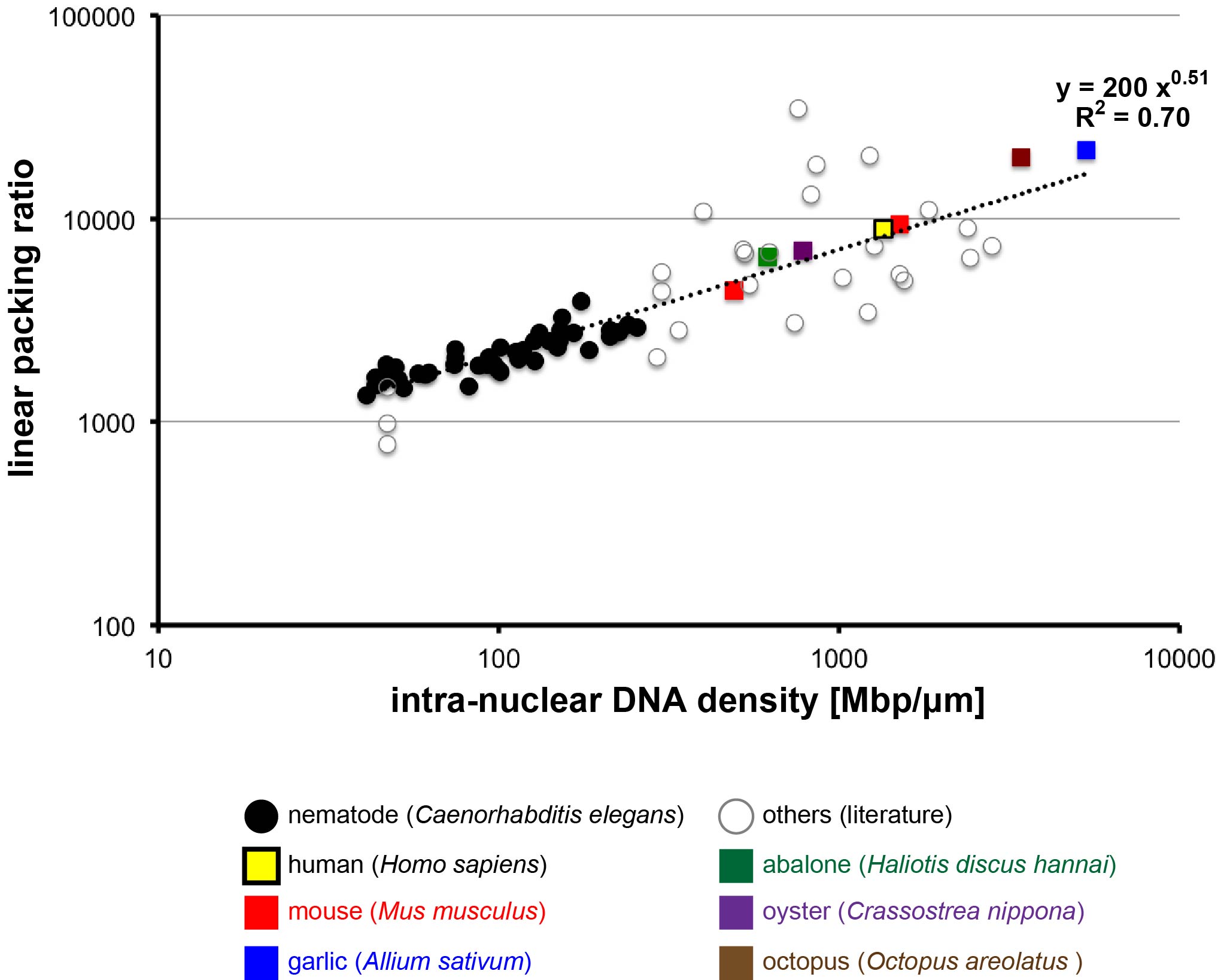A universal correlation between the density of the DNA and the length of mitotic chromosome
Cell Architecture Laboratory / Kimura Group
Scaling relationship between intra-nuclear DNA density and chromosomal condensation in metazoan and plant.
Hara Y, Adachi K, Kagohashi S, Yamagata K, Tanabe H, Kikuchi A, Okumura S-I, Kimura A.
Chromosome Science, 19, 43-49 (2016). DOI:10.11352/scr.19.43
Because the fundamental structure of chromosomes is conserved across eukaryotes, it might be assumed that an increase in the number of DNA base-pairs in a chromosome would lead to a corresponding increase in the physical length of chromosome. This does not appear to be the case, however. We compared the lengths of mitotic chromosome from several diverse species to determine the relationship between chromosome length, number of base-pairs, and the extent of chromosome packing. We found that all species share the same relationship among these, indicating that as base-pairs are added, chromosomes become more tightly packed so that the overall length increases less than expected. Our results suggest that instead of being related to the number of DNA base-pairs, chromosome length might be proportional to the surface area of the nucleus. This may be due to the need for the chromosomes to fit within a nuclear area known as the metaphase plate during mitosis, which occurs during cellular reproduction. This study provides insight into the features that drive the evolution of genome, chromosome, nucleus, and cell size and indicates that these characteristics are shared across eukaryotes.

Figure. The degree of chromosome condensation (linear packing ratio) is correlated with intra-nuclear DNA density across species (Figure 1 of this paper). The double logarithmic plot of linear packing ratio against intra-nuclear DNA density is shown. The values obtained in this study are denoted with colored squares.















